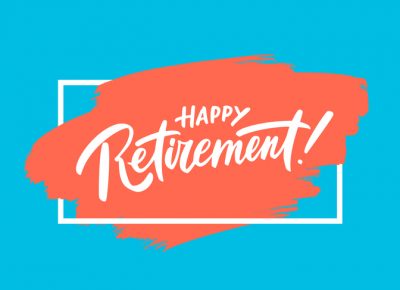Author Archives: vlm
Marc Sinkow featured on Sales & Marketing Playbook: Unleashed

Unlock the secrets to transformative business success with insights from Evan Polin and Craig Andrews alongside our special guest, Marc Sinkow. Dive deep into the world of CEO roundtables, where we explore how these sessions can elevate business leaders by fostering accountability and shared experiences. Marc, a veteran in guiding entrepreneurs as a “chief Sherpa,” shares invaluable perspectives on overcoming the unique challenges that CEOs face. Discover how these collaborative environments provide a breeding ground for innovation, offering support on critical topics like culture and financing, and ultimately enabling business leaders to thrive and reach new heights.
Communication isn’t just about talking—it’s about aligning your entire organization under a customer-centric vision. Learn how to bridge communication gaps between your sales and marketing teams with tools like behavioral assessment testing and the Entrepreneurial Operating System (EOS). This episode empowers you with strategies to set strong examples from the top, encouraging a culture of feedback and continuous growth. We wrap up with an energizing discussion on the Sales and Marketing Playbook, urging you to keep exploring and innovating. Stay connected for more exclusive insights that will help your business soar.
Law Firm Pivots Marketing From “B2B” To “B2C”

Issue: A Local Law Firm is dedicated to helping clients with legal and financial challenges of aging. They are attempting to pivot their marketing, from targeting professionals to targeting consumers.
Significance: Anticipated 50% drop in revenue extending beyond the initial three-month projection. The firm is in this for the foreseeable future.
Background: For 20 years, the Law Firm has engaged in educational marketing that is focused on referral sources: SWs, NH/AL, home care agencies, attorneys, financial advisors, etc., who would refer business to the Law Firm . The company has a great deal of printed resources that referral sources can hand out to prospective clients and make the phone ring. The Law Firm has historically outworked and outspent competitors.
Ideal Outcome: The goal is to develop a 180-day revised marketing strategy focused on direct to consumer communications. To move from “B to B” to “B to C”.
Roadblocks: The firm had concerns about the time it takes to pivot their marketing and their ability to effectively do so. The current pandemic-affected environment precludes family members’ desire to place loved ones in long-term care facilities. In addition, the Internet is the great equalizer, and the firm wanted to spend their marketing dollars wisely to compete with smaller firms.
The team gathering offered a wealth of suggestions.
Recomendations:
- Home Health Agencies assist in the private pay market as well as the insurance markets. The firm can assist them in getting paid.
- Partner with others for the distribution of the firm’s promotional materials, possibly with a compensation model involved.
- Totem Pole lead rehash – use list of 12,000 existing leads. What were their needs 1, 3, and 5 years ago?
- Consider your services as a package for the lifetime of your clients, and consumers in different points of the life cycle, e.g. the 50-year-old with a “teaser” offering (a will possibly). Then have a discussion with them regarding their parents.
- Video your current clients with their permission and use that for digital marketing purposes.
- Help consumers know when to engage; many of them do not.
- Link in with potential partners digitally.
The team advised the firm to develop a comprehensive marketing strategy complemented by a sales strategy. Stay the course doing what the firm is best at; competitors are not as prepared to weather the storm. Sales are not an issue, and the firm can withstand a short-term pivot.
Outcomes: The firm found that “staying the course at what they are best at” to be sound advice. They improved their digital marketing as well, bringing in a new marketing company in August of 2020. The Law Firm remains relevant across all digital platforms, effectively staying ahead of their competitors.
Financial Advisor Discovers New Ways To Thrive Amid Pandemic

Issue: In July 2020, a business owner had a need to find growth in the midst of the COVID-19 pandemic. They had launched a new firm, but after several months of more money leaving than coming in, the owner became very concerned about growth.
Significance: The company owner had been neglecting potential opportunities in the pandemic environment, including finding sources that hadn’t previously been considered. There could also be more contribution from the team in obtaining clients.
Background: Owner had been successful without the benefit of an extensive professional marketing budget, but a new strategy was needed.
The team gathering offered a great deal of worthwhile input.
Recommendations:
- Involve the entire team in the process of obtaining new clients.
- Network with larger firms who might be willing to share smaller fish below their minimums. Owner had not considered this option.
- Focus on current relationships and ask clients for referrals. For the 65-75 year-old demographic, ask for referrals to their children.
- Let the owner focus on endowments, and leave smaller clients to skilled representatives.
- Update marketing materials.
- Owner enjoys mentoring; establish a process for a sales representative to hire others.
- Leverage the African American ethnicity of team member, including his involvement in the African American Chamber of Commerce.
- Focus on new targets for business clients: Unions, Churches/Synagogues, Diversity Congress, Donor Search Organizations, Newly Started Physicians.
- Advertise billing options and use new content for targeted groups.
- Hire a sales coach for team member who is about to complete his CFA.
Outcomes:
The owner crafted a vision for growth and got legitimate buy-in from the group. The team is helping in many ways. The company has hired a marketing firm that is helping with SEO, social media, updating website, sales process and more.
Asking for referrals has worked quite well. Referral business has picked up significantly in the past few months, including working with clients’ children. Endowment work is also picking up. Owner just picked up a $3.5 million endowment and finished RFP for a $17 million endowment.
Sales have picked up quite a bit in the last three to six months, mostly but not all from referrals.
Web Development Firm Monetizes Change Orders More Efficiently

Issue: Calls and emails for website maintenance and change orders are disruptive and they tend to interrupt workflow on larger projects and are not conducive to growth model.
Significance: The company is trying to work with high value customers who are on monthly retainer and SEO contracts. Small change orders, while billable are not worth interrupting the flow of projects under development.
Background: Company formed in 2001. At that time change orders represented 40% of all business. today they only represent 5% of revenue but consume closer to 10% of time.
Actions Taken: the company has tried to address this problem many times.
- Online Ticketing System
- Longer Wait Times for Changes
- Phone Tree to Screen calls
Roadblocks: Customers were very turned off by these changes and suggested that the reason they hired the company was for personalized service.
Desired Results: Reduce the financial drain of small change orders without creating bad-will with current customers.
Recommendations:
- Reconsider intern model having administrative duties handled providing an opportunity for the development of homegrown talent
- Subscription model
a. Increase the number on this model providing a new revenue/profit stream
b. Annual flat fee + maintenance fee
c. Don’t focus on individual account profit as you may lose on a few however the average will end up being profitable - Survey your best clients what is/are the value(s) they appreciate most e.g. turnaround time/responsiveness etc…
- Do not change your current model. Use it as an opportunity to upsell clients. Provide an incentive for your personnel when they do so
- Mini project, assign an account manager non-technical person have them identify the changes necessary then use a ticketing system for work completion. Schedule callbacks for higher level person with the customer within a specified time frame
- All change orders should have a specific minimum – half an hour or more?
- Quantify the value of marketing. Invest in marketing internally to grow revenue at times may be a loss leader. The relevance is not customer to customer but task to task.
- Identify your cost per customer take into account all components. Engage your teams understanding for the necessity of tracking costs. Best to fix this now to align your profit model moving forward.
Outcomes:
The company instituted a a policy that all change orders have a minimum fee regardless of how small they are. This has resulted in better revenue and has allowed small change orders to be given the attention that the customers have come to expect.
Medical Practice Builds Profitability Post COVID-19

Issue: Medical practice needs to build a an efficient and profitable organization post COVID-19.
Significance: A viable exit strategy for the business owner due to personal family complications
Background: Started medical practice 2003 with husband as President. Husband just saw patients and did not provide any operational oversight. 2009 transferred all legal ownership operational oversight (President) while seeing ¾ of patients.
- 2013 hired additional physician who was their neighbor as business had recently doubled after actually following an industry management system they had since 2011 as needed to get revenue up to hire additional personnel.
- 2018 moved to a 5000 ft.² facility Practice ran smoothly through the summer of 2018 with 4 doctors on staff. Owner/President was traveling nationally having published a book outlining her success speaking at conventions.
- July ‘18 she unexpectedly ruptured a cervical disc and lost use of arm which left her unable to travel or run practice.
- August ‘18 fired female assoc. and came back to work early.
- October ‘18 added an additional office. Blew disc worse 2 weeks later. Out until 2/2019 and wasn’t really “with it” due to pain. Patient visits fell from 2000 to 1200 per week.Toxic work environment due to putting others in charge as owner was incapactitated who did not have same values or leadership.
- Expansion plans focused on hiring doctors to run satellite offices and assume operational responsibilities and see small handful of patients Most stressful was repairing toxic culture.
- 22 on team.
Actions Taken: 2019 consolidated team and fired to maintain culture. Reducing from 22 to 12. Pandemic (2020) necessitated an additional reduction to 8.
Hired multiple outsourced operational resources (administrative, financial (accounting): Was unsuccessful.
Hired industry management consulting firm, 2011 to present, to assist in achieving growth goals. Currently 20 hours per month. Have established industry targeted KPIs.
Staff huddles twice daily and has weekly team and doc meeting.
Had personal assistant – spent 50% of time in office and 50% managing home – stole from her while she was injured and erased all Standard Operating Procedures (SOP)s. Replacement was fired 7/19 for insubordination.
Have extensive written job descriptions and SOPs.
Participated and graduated from Goldman Sachs 10K SB program 2019.
Roadblocks:
- Have not had an office manager since 13 year employee left for more money.
- Staffing struggles and turnover.
- Disrespect for management
- Disregard for SOPs and systems in place.
- Drama in the workplace- finger pointing – daily huddles turn into “bitch” sessions and avoiding responsibility.
- Patient complaints about lack of communication with insurance.
- Desire to make everyone happy
- Working 16-hour days
- When and how to discipline vs punish poor behavior
- Bad reviews on social media from team not being meticulous.
- Employees reluctance to accept responsibility.
Desired Results:
- Hire engaged key staff to assume administrative, accounting, and patient experience roles.
- Increase profitability
- Staff buy-in to policies and procedures.
- Improve work/life balance
- 9-year plan for operational exit strategy.
Recommendations:
From a behavioral assessment you are a “Visionary” and need an “Integrator” to complement you. Conduct an anonymous survey of your staff limiting the survey 8 – 10 questions. Use survey monkey.
Your expectations are based upon an old school mentality where employees keep their heads down. A millennial workforce requires constant support and feedback. (This is not true at all. – Your expectations were if an employee was nice to you, that meant they wanted to do a good job. Due to your belief normal people operate for good, you ignored signs that they were actually insubordinate and willfully not doing their jobs. Due to your need to be liked, you could not hold people accountable when it came to issue a performance review.)
As a part of your candidate screening process include behavioral assessment testing to be used in conjunction with your job descriptions. Looking for “task” oriented personnel can be baked into the process. Investigate the Predictive Index.
When meeting individually with your personnel the focus of the discussion should move from what you can do for them to what is needed from them to do to get things done.
Set expectations, involve personnel in the process, have them report back to you on how things will get done then hold them accountable.
Hire someone that understands your vision and can lead the charge e.g. a Director of Operations (COO).
Reassess the benefits of your industry consultant. Eight years is a long time for the engagement
Being a disciplinarian is not your forte.
Define the following “why we do what we do”, “how we do it”, and “what we do”
Outcomes:
- The recommendations as well as the quarantine provided the time to reassess.
- I have cleaned house of the toxic people as well as things I was doing that were ineffective
- I’ve taken my life back and do not live at the office.
- I pop-in for a few minutes for good reasons and therefore have a much better work-life balance.
- Of the team members I kept – they are happy and thank me daily
- Business is up 25% from before COVID.
- Hired a great new doc based on our VALUES.
- Renegotiated the office lease
- Discontinued the services with the industry consultant.
I came up with a solid system at work where profitability is the focus and locked myself out of some to run accounts where they are run automatically with a lot less stress. As a result, cash account at work is nearly 3 times what it was prior to COVID cash flow is no longer an issue. All credit cards have been paid off.
Company Creates Exit Plan for Loyal Employee

Issue: Retiring a loyal and respected sales representative.
Significance: There had been a significant decrease in drive and productivity over the previous 12 months which has been noted by his counterparts
Background: Started as independent when hired in 2005. He became full-time W-2 employee in 2014.
His pace has slowed and was not keeping up with the new direction the company was going. Company had three full time sales reps who work as a team. The territory can be covered with two reps. Compensation $114K in 2019 and on pace for $123K in 2020. Base Salary: $32K, $6K in car allowance, $5K in health insurance. The rest made up of commissions
Actions Taken: Company has two more aggressive reps locally. In 2016 a conversation was had with the representative regarding retirement. The response was a plan to work for an additional 3-5 years. Two sales reps were hired the beginning of 2019. There was an adjustment in commission structure to exclude some new products that were not actively promoted
Ideal Outcome: Employee leaves happy.
- Start the following year (2021) with $115K back in the budget
- Use savings to re-invest in other areas with needs.
- Goodwill seen by other employees
- How we take care of loyal personnel
- A fair and equitable exit package
Roadblocks: Employee does not know currently we are working on an exit package for him.
Concern there will not be a happy ending
Recommendations:
Meet with Employee
- Determine his wants and the order of priority e.g. financial, physical (health insurance), emotional (sense of purpose). An understanding of his personal exit strategy?
- Options – a financial settlement e.g. severance, payment towards health insurance covering a Medigap policy, relevancy in retirement – Some part-time position with the company.
- Part-time position could be as a company ambassador or consultant
- Compensation to protect him so he can maximize Social Security benefits. The figure not to exceed the annual maximum social security full benefits
Gold watch
- Acknowledge and celebrate his contribution over the years. Highlight what his contribution to the growth of the company has been.
- Provide a vacation experience.
- Embellish the company’s excitement for the plan as this will be the first package the company will offer and set precedent
There will be six months to evaluate the “transition plan” the initial conversation should take place soon. Any new position created could include activities others may not enjoy e.g. social activity golf…. Compensation to be a small stipend plus covering of expenses. Make all compensation plans finite. Have a conversation with a labor attorney to ensure company protection. Do so prior to the initial conversation as well as once a package has been determined.
The Stockdale Paradox: Confidence that You Can and Will Prevail

The Stockdale paradox aptly states the importance of honesty and integrity with both oneself and those around them. As leaders expressing the optimism and intestinal fortitude that we will prevail with the reality, honesty and transparency for success through adversity. We all have our stories, not necessarily to the extreme of Admiral Stockdale, from which we and draw strength. We will live thru this pandemic and be stronger and more resilient because of it.
Watch Video Exploring Stockdale Paradox
Stockdale Paradox In Action
A manufacturer of sports apparel (essentially a sewing operation), considered a nonessential business, was faced with 100% layoff. Seeing the severity of the mandate and the need to close their doors met with their personnel to address the situation. This occurred on March 20th Over the weekend the president’s team brainstormed ideas which would enable production to be restored and return their employees safely. They pivoted and moved their sewing operation to the production of facemasks. They took the necessary steps to create a safe clean environment under the circumstances so they could return their employees to work. They have been able to obtain a large contract with a convenience store chain saving jobs and providing necessary PPE
Non-Essential Business Finds Work During Crisis

Issue: A business owner for a non-essential business during the Covid 19 Pandemic found himself “officially” closed based on the governors’ mandate.
Significance: Owner was concerned over the well-being of his employees and their families. He is dedicated to them, many of whom have been with him for 20 years or more.
Background: They are an “open book” company sharing their financials with personnel so they understand their contributions to the profitability of the company and the current dire situation. Their product is targeted to large sporting and business events as well as hospitality industries which currently have ceased to exist.
Prior Actions Taken: Company had a hoax/scare of a positive Corona test from one of their employees earlier in the week that caused them to evacuate the business while awaiting test results. Suffice it to say the incident was caused by the anxiety created over what is happening. Company verified the hoax and had a conference call with the staff, after legal clearance, of what they could and could not tell the staff. The message and plan were to return to work after the weekend. Unfortunately, shortly after informing his employees the governor mandated the shutdown of his and other similar businesses as non-essential after having told the staff they were cleared to return to work after the weekend for which they were to be paid for.
Owner told employees to enjoy the weekend with the family and get ready to fight Monday. The company had paid everyone to date but the Governor’s mandate made the situation dire.
What to do:
Continue to pay the entire staff and not lay anyone off?
- Execute the plan yet to be put in place prior to the governor’s mandate, laying off half the staff maintaining the balance (office and sales) to make collection calls, enter payments received, and wind down the operation of in-house orders.
Lay the entire company off immediately?
- Seriously consider winding down the company not assuming any additional debt look for a deep-pocketed investor to essentially turn the keys over to.
Recommendations:
Through the support of the Council the recommendation was to “work the problem” thru both existing channels and contacts
Outcomes: Owner leveraged contacts he had established to identify a new opportunity. Within days through an introduction from his bank, he established a call center for New York testing sites for the COVID-19 virus. This business owner was able to maintain his employee base, leverage contacts he had and revamp his workforce. He is currently helping others “work their problems”
Buy Out or Phase Out a 49% Partner

Issue: A business owner was looking to buy out or phase out his 49% equity partner
Significance: From 2017-2018, the business had seen a sharp decline in revenue, from $2.5 million to $1.4 million. The business had to lay off more than 50% of the staff, and the owner needs to increase sales before attempting to sell the business again.
Background: Owner feels that he is a good guy but has not produced at an acceptable level in quite some time. Their contributions are not commensurate with the salaries drawn.
Prior Actions Taken: They have had several conversations and have brought in experts to show him the difference between ownership and employee. His position continues to change and he has never met his new goals.
Recommendations:
Owner must have a valuation done on the business. to determine the value of his share and speak with an attorney to determine your options and develop a plan and sequence of execution. An amicable agreement is best, however:
- Create a file documenting events tied to his performance over time
- Terminate him with severance
- Create the above situation requiring him to decide (make him uncomfortable financially
- Make it clear there is no profit for distribution
- Ultimately either agree on a buyout or move towards legal action.
Should the owner choose to continue to delay it will only serve as a frustration and drain on both he and the business. Owner may need to overpay in order to arrive at a resolution.
Outcomes: A meeting with the attorneys took place with the following strategies determined:
- A valuation was completed
- It was determined to be cost prohibitive to purchase the partners shares
- An amicable strategy was determined where the partner would serve as company liaison
Amicable discussion with the successful understanding of the partners contributions and an agreement of a long term strategy for growth to make the company saleable within 10 years to the benefit of both parties
Business Growth and Exit Strategy

Issue: A business owner was looking to hire a person to oversee sales. Prospective sales leader wanted an ownership stake in the company.
Significance: From 2017-2018, the business had seen a sharp decline in revenue, from $2.5 million to $1.4 million. The business had to lay off more than 50% of the staff, and the owner needs to increase sales before attempting to sell the business again.
Background: Due to practice mergers and acquisitions, the business had lost three of its nine customers. The owner attempted to sell the business at the start of 2018 because of these concerns, and also because the owner sought to go back into the more enjoyable work of consulting. A local business person offered to take over sales but wanted a 40% ownership in the business.
Actions Taken: The business owner drafted an agreement of sales and employment, but the initial agreement will not work due to issues with existing partners.
Ideal Outcome: Business owner partners with prospective sales leader, grows the business to $3 million by the end of 2020 and to $5.5 million eventually, enabling the business owner to sell the lab. Business owner maintains 51% of business, existing partner owns 10%, prospective sales leader owns 39%. Owner hires a lab manager to take over the day-to-day operations. Owner sells business in 1-2 years unless business continues to grow.
Roadblocks: There are complications with the existing Operating Agreement. The owner has taken over management of the lab, diminishing capacity with his consulting business. In addition, the owner is ready to sign consulting agreement with another company. Finally, the owner is reluctant to take on a new partner.
Recommendations:
- Hire the sales manager and devote your time to PLS. Structure the ownership agreement based on performance and award compensation for sales success.
- Create an ironclad agreement that allows for buying back shares for underperformance. Tier percentage of ownership with strike points at predetermined levels, for additional ownership interest.
- Be sure to understand the potential partner’s motivation. Have trusted advisors speak with potential partner as well.
Final Results:
- The owner met with potential sales leader and established terms, then drafted an agreement with his attorney. The owner’s attorney reviewed the agreement, and stated it would not work legally as proposed. Negotiations ended.
- Shortly after negotiations ended, the company was awarded a new and exclusive contract. After the award, a competitor reached out to collaborate with the company.
- The potential sales leader soon offered to purchase the business, and offer the current owner a salaried position. An agreement was drafted but then fell apart during due diligence for several reasons. The owner wanted more money due to new contract than potential buyer was willing to pay.
- Owner currently working with new business on new contract.
Lessons Learned: The owner of the business became prone to potentially unwise offers as a result of concern for diminished sales and a desire to change his career path. He wisely trusted his instinct and paid attention to potential red flags, put protective measures in place, and performed due diligence on offer. As a result, the owner voided a potentially damaging decision and managed to grow the business on his own, with a brighter future ahead.
